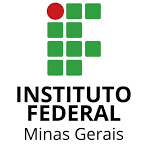REFERÊNCIAS
BREDELLA, Lothar. For a Flexible Model of Intercultural Understanding. In: ALRED, G.; BYRAM, M.; FLEMING, M. (Eds.). Intercultural Experience and Education, Clevedon: Multilingual Matters Ltd, 2002. p. 31-49.
BYRAM, M. Teaching and assessing intercultural communicative competence. Clevedon: Multilingual Matters Ltd, 1997.
______. The Culnet Intercultural Citizenship Project. In: O’DOWD, R; LEWIS, T. (Eds.), Online intercultural exchange: Policy, pedagogy, practice. New York: Routledge, 2016. p. 248-262.
CORBETT, J. An Intercultural Approach to English Language Teaching. Clevedon: Multilingual Matters Ltd, 2003.
CROZET, C; LIDDICOAT, A.J. The challenge of intercultural language teaching: engaging with culture in the classroom. In: LO BIANCO, J.; LIDDICOAT, A.J. CROZET, C. (Eds.). Striving for the third place: intercultural competence through language education. Canberra: Language Australia, 1999. p. 113-126.
FANTINI, A.E. Exploring and assessing intercultural competence. Federation EIL: Brattleboro, 2006.
FURSTENBERG, G. The Cultura Exchange Programme. In: O’DOWD, R; LEWIS, T. Eds.).Online Intercultural Exchange: policy, pedagogy, practice. New York: Routledge, 2016. p. 248-255.
GIMENEZ, Telma. Eles comem cornflakes, nós comemos pão com manteiga: espaços para reflexão sobre cultura na aula de língua estrangeira. Boletim NAPDATE, UEL, Londrina, agosto/2006.
HANNA, V. L. H. O viés intercultural no ensino de línguas estrangeiras: aprendizes como etnógrafos modernos. In: HANNA, V. L. H. (Ed.). Linguagens e Saberes: estudos linguísticos. São Paulo, SP: Annablume Editora, 2015. p. 91-103.
KRAMSCH, C. Context and culture in language teaching. Oxford: Oxford University Press, 1993.
______. Language and culture. Oxford: Oxford University Press, 1998. ______Post 9/11: Foreign languages between knowledge and power. Applied Linguistics, v.26, n. 4, 2005. p. 545-567.
KRAMSCH, C.; THORNE, S. Foreign language learning as global communicative practice. In: BLOCK, D.; CAMERON, D. (Eds.) Globalization and language teaching. London, UK: Routledge, 2002. p. 83-100.
LUNA, J. M. F; SCHAEFER, R. Negociação de assuntos interculturais em espaços telecolaborativos. No prelo.
O’DOWD, R. Understanding “the other side”: Intercultural learning in a Spanish–English e-mail exchange. Language Learning & Technology, n. 7, 2003. p. 118–144.
______. The Use of Videoconferencing and E-mail as Mediators of Intercultural Student Ethnography. In: BELZ, J.A.; THORNE, S.L. (Eds.). Internet-mediated Intercultural Foreign Language Education. Boston, MA: Heinle & Heinle, 2006. p. 86-120.
______. Telecollaboration and CALL. In: THOMAS, M.; REINDEERS, H., WARSCHAUER, M. (Eds.). Contemporary computer-assisted language learning. London: Bloomsbury Academic, 2013. p. 123-141.
O’DOWD, R.; LEWIS, T. (Eds). Online Intercultural Exchange: policy, pedagogy, practice. Routledge Studies in Language and Intercultural Communication. London: Routledge, 2016.
TELLES, J. A. (Org.). Teletandem: um contexto virtual, autônomo e colaborativo para aprendizagem de línguas estrangeiras no século XXI. Campinas: Pontes Editores, 2009.
______. Teletandem: Transculturalidade nas interações on-line em línguas estrangeiras por webcam. Projeto de Pesquisa. UNESP – Universidade Estadual Paulista, 2011.
______. Learning foreign languages in Teletandem: resources and strategies. DELTA [online], v. 31, n. 3, 2015. p. 603-632.
WARE, P.; KRAMSCH, C. Toward an intercultural stance: Teaching German and English through telecollaboration. Modern Language Journal, v.89, n. 2, p. 190–205, 2005
